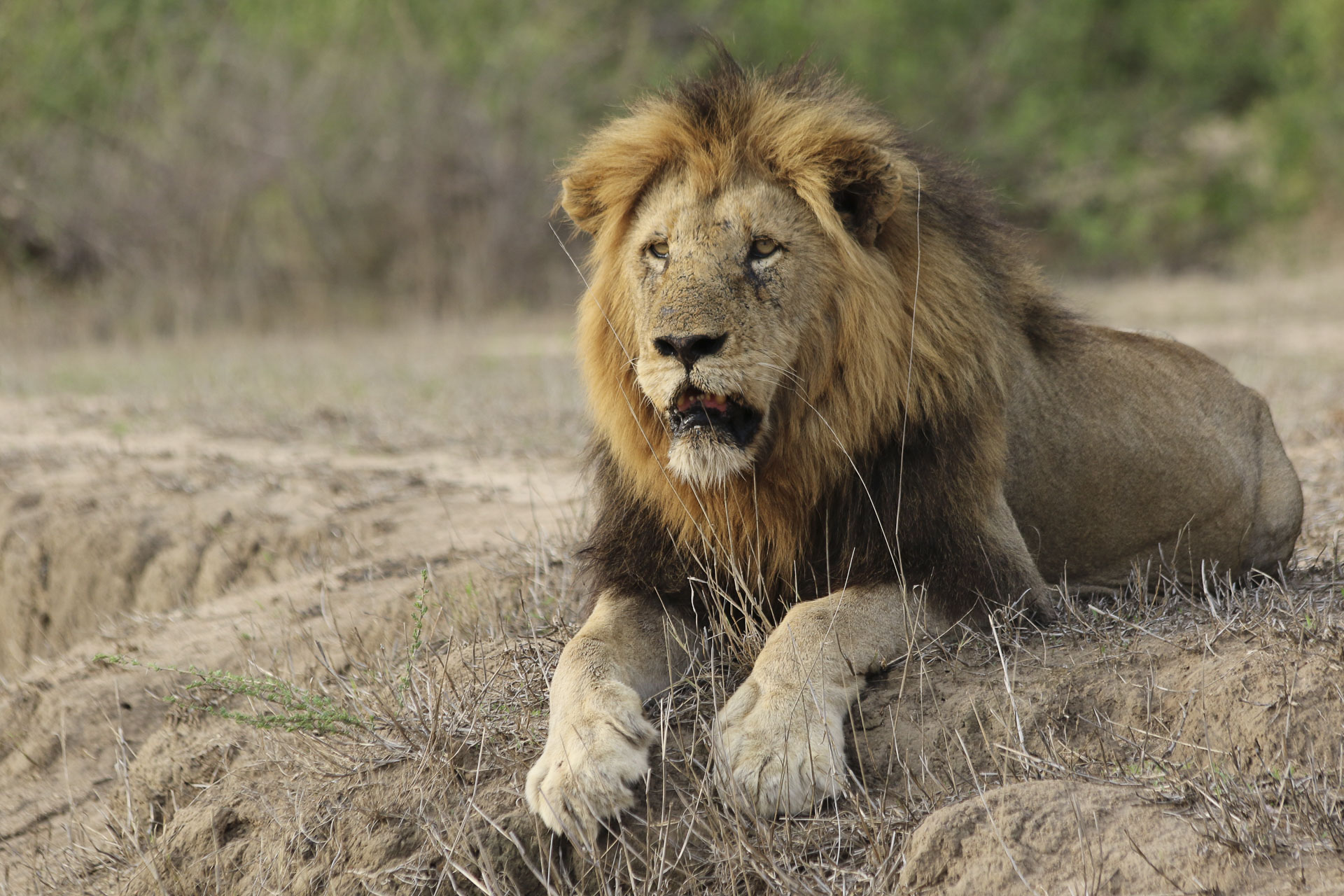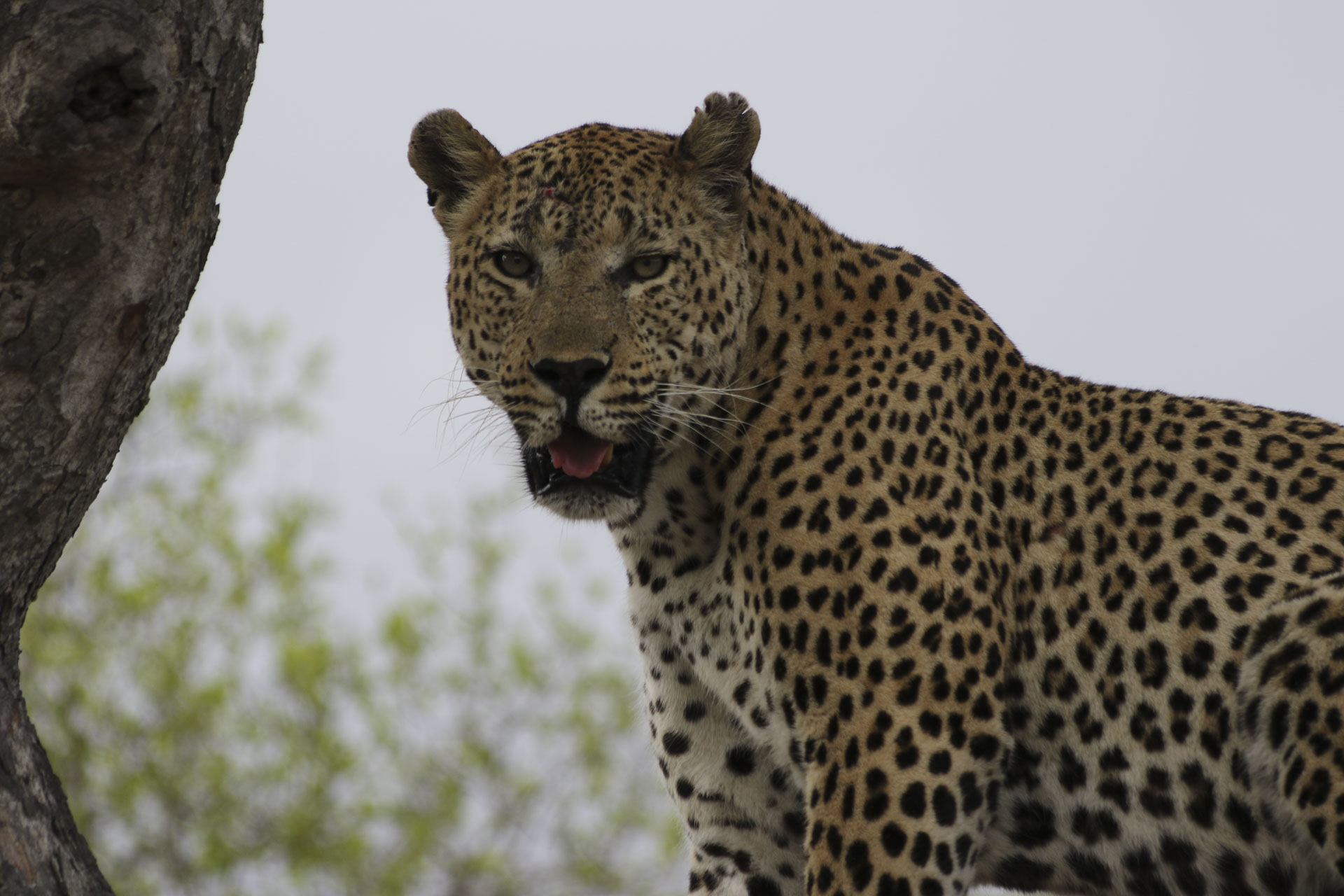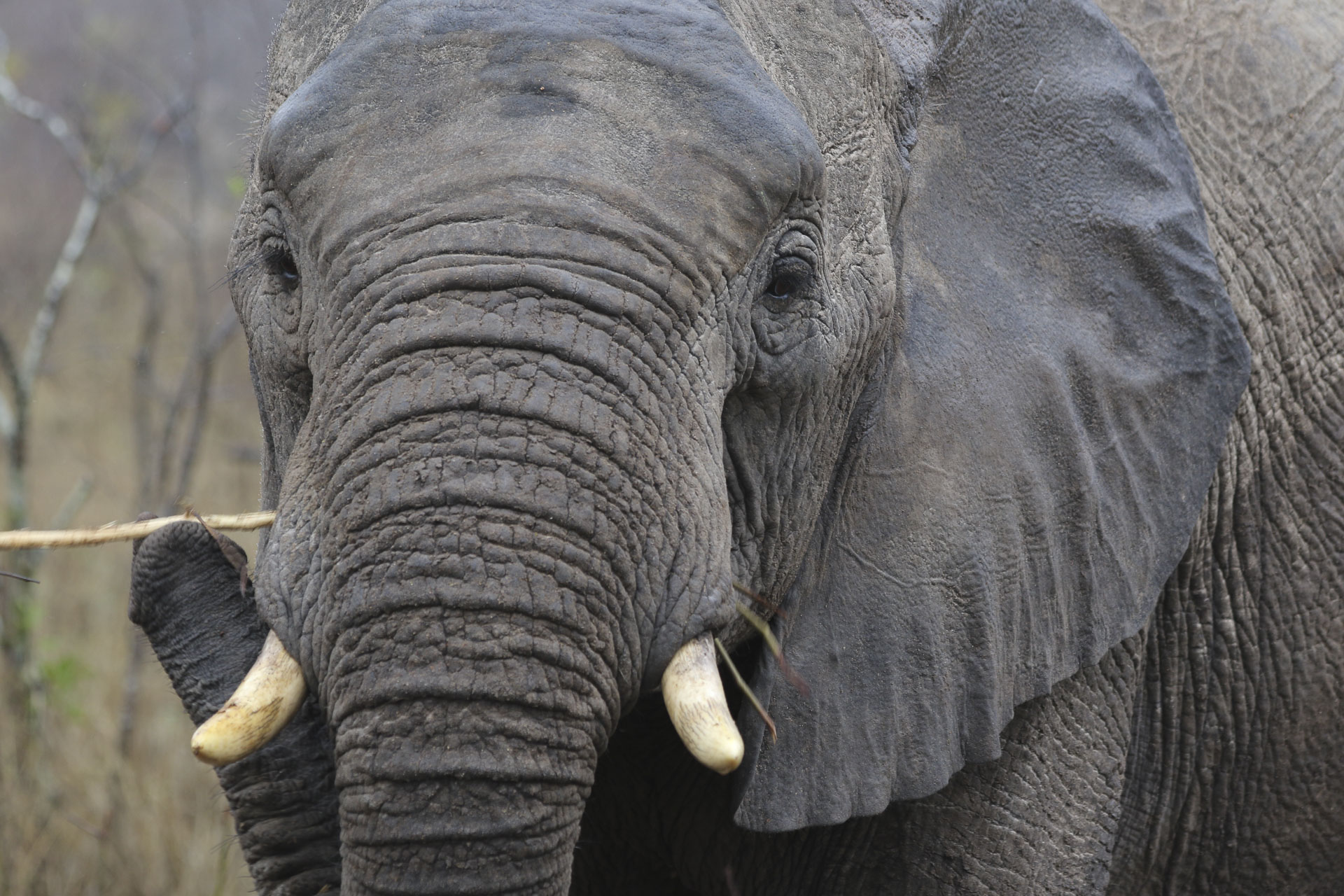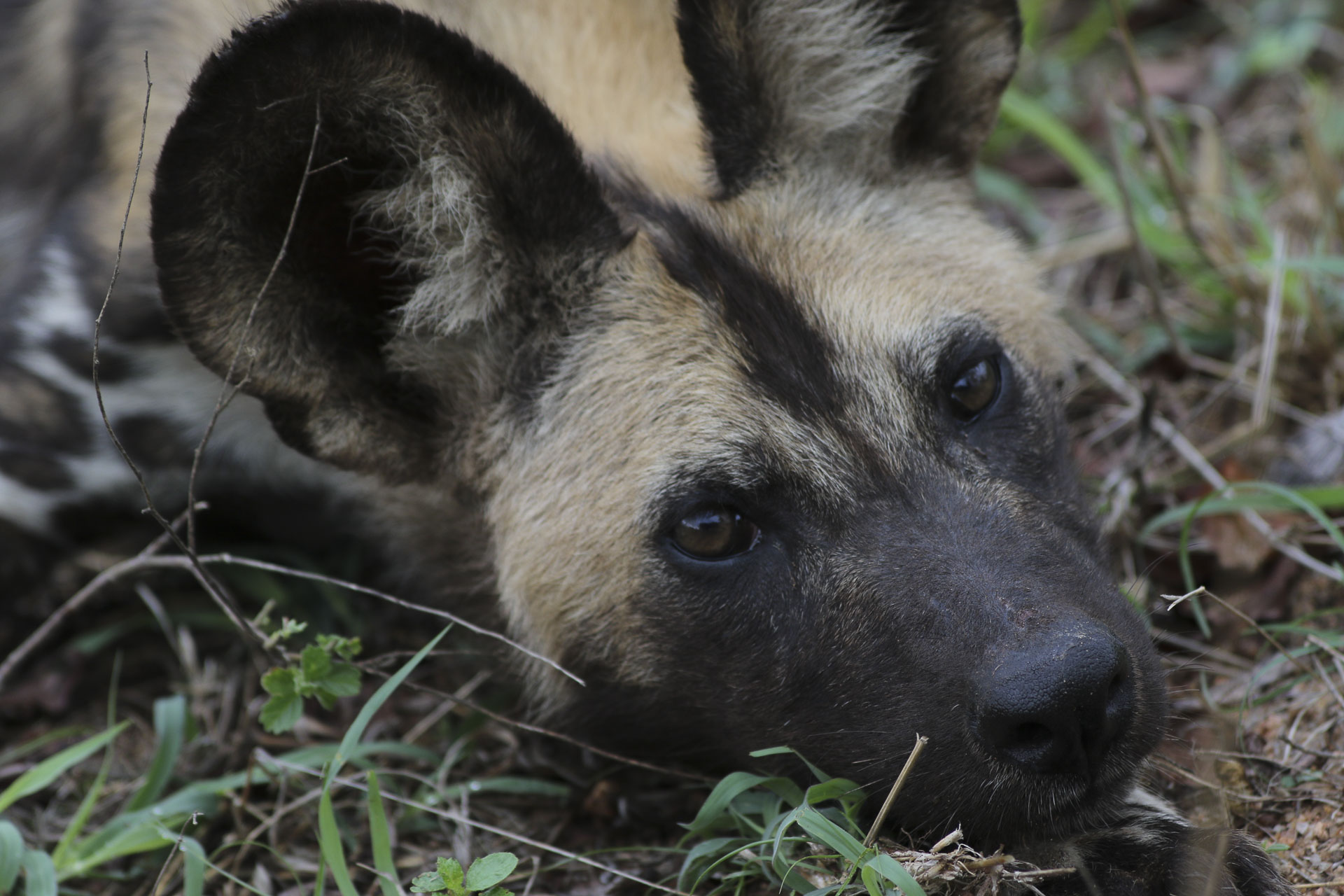Exploring South Africa: Our guide to Kruger National Park

“Africa. No continent on Earth today has such spectacular wildlife.”
That’s David Attenborough introducing the latest BBC documentary in the series Seven Worlds One Planet. Beverley Neal has seen more of this great continent than most. She’s been travelling all over Africa for many years, most recently as Virgin Holidays’ destination manager covering, among others, all of our Africa destinations. Here’s her latest report from South Africa’s Kruger National Park – the perfect place to witness nature’s most extraordinary sights and sounds.

Beverley, front seat, heads off to witness Africa’s incredible wildlife.
“So,” asks James, our ranger. “What do you want to see?”
We’re on our first afternoon drive at Sabi Sabi, a spectacular lodge in the southern section of the world-renowned Sabi Sands Game Reserve, adjacent to Kruger National Park. He’s right to ask. We – being myself, the destination manager for Africa, and eight of our Virgin Holidays travel agents – have been thoroughly spoilt in terms of lodges. Sabi Sabi is number four and we certainly haven’t slummed it.
After a late arrival on the first night, we headed to our founder Sir Richard Branson’s lodge Ulusaba, with a morning drive ticking off elephants and leopard. Next was Mala Mala, famed for having the largest concession in the Sabi Sands and a dream stop for photography enthusiasts. Here we virtually fell straight out of the lodge into rhino and an active pride of lions. Then into ‘Kruger proper’ with a night at Jock Safari Lodge, seeing lion cubs, a fleeting leopard and a fantastic bull elephant, and on our return a pride of lions asleep next to the property (‘you can see them from the balcony of room #1’, I was told).

Kruger up close
As a friendly bunch of Virgin agents, we cram into one vehicle, but for guests there’s a maximum number of six. I take the front seat next to James. It’s the lowest seat with the least visibility but as an experienced safari-goer it’s quite an exciting viewpoint.
The Kruger and its adjacent concessions are my favourite safari destination. A combination of excellent camps and lodges, easy accessibility and ease of self-driving, and of course the wildlife, is second to none. I don’t think this is a fashionable thing for avid safari-goers to say, and while I still have Mana Pools, the Serengeti, South Luangwa and Hwange on my next-to-do safari list, I know Kruger will always be my special place.

It’s the group’s first time to Kruger and for some the first time to South Africa or on safari, and they couldn’t have hoped for a better introduction. “For the Big Five, we need to add buffalo and we’d like to see another leopard, preferably in a tree,” I tell James with a wink. “A big pod of hippos please, and we need some wildlife drama like a hunt or a kill. We haven’t seen wild dogs, and a cheetah would be good. No pressure.”
As we continue I add a few more to the wish-list: Honey badger, pangolin, aardvark and some snakes, oh and we haven’t seen a chameleon yet, either. I know from experience these are the real tough ones. Pangolin and aardvarks are probably once in a lifetime ranger spots, nevertheless we’re in the Sabi Sands so I can aim high!

Often compared to the size of Wales, the Kruger is a huge expanse of wildlife biodiversity in the northeast corner of South Africa. Within the park are a handful of concessions; privately owned and managed reserves with unfenced borders and a high concentration of game. The larger concessions such as the Timbavati and Sabi Sands are more familiar, as many UK tour operators feature a range of lodges within them. Skukuza Airport services the southern Kruger and Sabi Sands, and Hoedspruit Airport serves Timbavati and the mid-Kruger lodges. This has made the area easily accessible. Daily flights into both airports direct from Cape Town, as well as numerous daily flights from Johannesburg, plus charters directly into the lodges on Federal Air, mean Kruger is now an easy add-on to your longer South Africa holiday.

No laughing matter. Coming face to face with a hyena!
Pick your season
Most safari destinations have two distinct seasons and Kruger is no exception. On paper we would say the rains come from November to February, with the dry season from May to September. Seasons are in reverse to ours and the South African summer is hot, humid and wet, so after the rains start, usually in November, the bush and trees get very green, much like in the UK. I’m often asked what the difference is between a Kenyan and South African safari and this is the first point. East African safaris are wide open expanses of horizons and plains whereas Kruger is scrub, bush and thick mopane trees. So when the bush is green, it is thick, and spotting the wildlife is therefore more difficult. In addition, the amount of rain means the rivers and waterholes are full, so wildlife is more widespread and again it’s harder to find high concentrations.

A real unicorn!
The upside for a Brit is it’s hot when the UK is cold so makes for a great winter getaway, plus it’s the best time for a Western Cape and Garden Route combo. In the dry season starting from April onwards, the bush starts to thin out and the water dries up, making the game spotting a bit easier and also clearer for the photography buffs. It does mean the morning and evening drives can be cooler (by this I mean cold) although days by the pool are still gorgeously warm and generally without humidity.

The rarest sighting of all. The African Wild Dog or Painted Wolf is Richard’s favourite animal.
Our strongest advocate for a winter safari – or peak-season to give it its real name (book early!) – is Estiaan, our lion-walking, leopard-catching, anti-rhino-poaching-unit guide at Jock Safari Lodge. Jock boasts a unique set-up in the park with a private 6,000 hectare concession, which means you have the advantage of drives on the park roads, without the tourists, but can also retreat back to your private piece of paradise. The Kruger Park gates open at 05:30 in the summer (this trip was November) so it’s an early rise to get out into the park before the self-drivers arrive.
Uniquely, Jock has a sleepout experience with an enclosed ‘sala’ (a mesh tent) on your private deck. One of my favourite aspects of being on safari is hearing the wildlife at night; hyenas and lions calling, elephants trumpeting, the crackles of cicadas. After a few nights under the noisy air-con, this was a welcome experience. The sun wakes you slowly, or heavily if you’ve enjoyed the evening Amarulas, but I am given the final wake-up at 04:45 by Estiaan for our 05:00 departure. For Estiaan, 5 a.m is tardy. “The best time of year is August, where we go out at 4 a.m,” he says. Ouch, I think, though I trust him implicitly. We spot hyenas and lions calling on the road (Google it, it’s the most magnificent noise) before retreating to the concession for some amazing elephants and rhino. After breakfast we go out to watch the lions which are asleep next to the lodge gate. Estiaan is definitely the expert. I’ll be back in August at 4 a.m, though I’m not sure my sleep-out will be as toasty.

Leopard spotting, wild dogs and the Big Five
Back to Sabi Sabi. We tick off the buffalo, so that’s the Big Five in six drives. We always recommend a minimum of three nights on safari, which gives you six drives, and in Kruger I’d expect to see the Big Five (lion, leopard, rhino, elephant and Cape buffalo) in that time, as well as so so much more. We then get a call and head out to a leopard, which I can’t resist mentioning to James is not in a tree. But it turns out to be an amazing sighting so we let him off. We sit with the sleeping leopard for a while and just as we reverse to leave, he’s up and off, so we follow him into the darkness and turn off the lights. He’s definitely on the hunt, down to the ground and stalking. Some wildebeest cross the road in the shadows but he misses. Then the hyenas start to wander through the bush and we leave him be. So that’s buffalo and a hunt.

We get many questions from prospective customers about why the cost in the private concessions is so high. The most important aspect is a very high concentration of game (these tend to be in prime safari locations) but also as this is private land the vehicles can go off road, getting you closer to the wildlife. Add to this the night drives, bush dining, sundowners, treehouse experiences… the key is to save your money in the Western Cape and blow the budget on the lodge.

Sabi Sabi has a huge concession in a prime location in the south of the Sabi Sands. The area is split into two adjacent squares, almost like the shape of two matching colours on a Battenberg cake (bad analogy but look at a map). Earth Lodge is the only lodge occupying the southwest square, so we head down and what do we see? Only the wild dogs! Apparently only 500 of these rare animals live in the Kruger but here we are, a prime location. We count around 20 pups who are passing around bits of impala including the head, keenly watched by a group of vultures. Squeaking, playing, jumping and sleeping, the dogs are nothing but fascinating to watch and photograph. And in the waterhole in front of Earth Lodge, a pod of hippos. Incredible.

The glorious Kruger summer means you can make the most of the pools and sunshine in the lodge before afternoon tea (so much food!) and the afternoon drives. The sun is strong and we head out to the north of the concession for more action, over the river bed and up the hill and.. of course a cheetah on a hunt. This is just silly! We follow the cheetah and watch him weave through the bushes stalking a herd of impala, but the barking starts and they know he is there. Instantly, he steps down admitting defeat. He knows his cover is blown. We leave him be, and head back to find a sundowner spot. The finest sundowners are complemented by dramatic clouds lit by lightning storms 20 miles away, another joy of the Kruger summer. On the way back, our tracker Foster is well and truly on it. He spots a tiny green chameleon in a thick green bush, lifting him to ‘legend’ status in the group.

The next morning, it’s home time. I normally miss my last morning drive but I don’t think you can at Sabi Sabi, there’s simply too much to miss. We pootle through the bush and enjoy some time watching the wildlife wake up before someone calls in a leopard. We head on over and guess what, it’s in a tree, chased up by some hyenas who’ve stolen its kill. It’s our hunting buddy from the other night: a huge scarred male, now with an additional scar on his tail. He’s grumpily pacing up and down a high branch, posing against a bright white morning sky. Then he climbs down slowly, and we follow him through the grass as he slumps under a tree. A breathtaking sighting. Just as we’re about to leave, a hyena weaves past us to antagonise the poor leopard again, as he hisses and bears teeth. Click, click, click. And we’re done. Four lodges, nine drives and another perfect trip to Kruger. Still no pangolin and aardvark, but that gives me a reason to go back.
If you’re thinking of taking a trip to Kruger with us, please visit one of the team who came on this trip: In-store, there’s Karen in Braehead, Lisa in Tamworth, Lee in Bournemouth, Xaviera in Sheffield Meadowhall, Catherine in Swansea and Liz in Devon, or call Mike or Lindy in our Worldwide Sales Centre team on 0344 739 5567.
All photos by Beverley Neal

